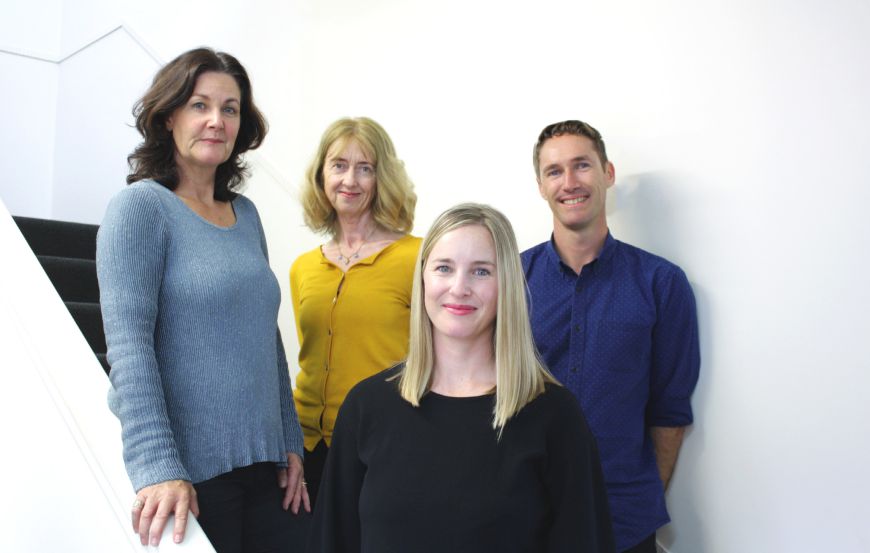Verve Magazine: BREATHE. EXHALE. REPEAT
- 20 June 2018
THE BENEFITS OF BREATHING THAT WORKS
“I would say that a lot of people don’t know that they need us” says Brooke Peirce, a clinically trained Physiotherapist and Director at Breathing Works in Remuera. The clinic is recognised as a world leader in the breathing rehabilitation business improving the energy, efficiency, focus and performance of clients through improved technique.
Breathing and its impact on a person’s life force is pretty academic. Yet societal respiratory problems are on the rise. You only have to look at the population statistics for anxiety and asthma which are staggering—all sitting up at around 10 percent.
Brooke’s husband and Co-Director, Scott points out the obvious, “Pretty much anyone with anxiety has a breathing dysfunction.” Treating stressed out executives to change their breathing style is a specialty. The “A-type personalities” he says with a “trigger in there somewhere” who have been coached from a young age in ballet or gymnastics to hold their stomach in—or swimmers and cyclists with “interesting breathing patterns”. After being retrained in how they breathe, clients come away changed with a “transformation of understanding” he says. The practice attracts clinical peers from as far away as the United Kingdom to observe its physiotherapy, mindfulness and strengthening breathing techniques that has trained and transformed 30,000 lives to date.

LEFT-RIGHT: Brooke Peirce, Scott Peirce, Tania Clifton-Smith, Janet Rowley.
Many are referred by General Practitioners and Specialists like Cardiologists who send their clients over with chest pain of a non-cardiac origin to be resolved. “They’ll go through to the hospital, then a specialist and end up on our doorstep because basically their breathing pattern has given them that chest pain.” However anyone off the street can walk in to make an appointment for an indepth consultation.
The comprehensive assessment involves completing three questionnaires before the one-on-one consultation that identifies the key “drivers of the dysfunction”. Scott unpacks the triad—three interlocking circles of psychological, biomechanical and chemical factors. “Some people may have all of those misfiring or they could be an athlete needing help with the style of breathing as one element—the biomechanical is not working.”
Matters biomechanical he says relate to the “big breathing muscle” of the diaphragm and how the muscles bring air into the lungs. They assess this functionality using ultra-sound and observing how clients actually breathe. Anxiousness, panic attacks, airway tension and irritability can be attributed to chemical changes, the second influencer he says. “We breathe in oxygen and breathe out carbon dioxide. Often we are not doing a good enough job of keeping those regulated within a nice, balanced state—we might breathe, hold or ventilate more leading to a change in
chemical makeup and pH.”
The last factor he says “robs a lot of energy from a psychological perspective” if it’s ineffectual. “You either feel relaxed if you breathe well or you feel very tense, very anxious and very panicky if you breathe too fast or up in your chest.”
The pathway to change he teaches is learning to have focussed attention and banish scattered thoughts. But both practitioners are quick to emphasise the clinic’s approach is not “one dimensional”.
They believe it’s about capturing the “full spectrum of events” that may be occurring with someone and trying to create a holistic package.
Breathing Works takes it further by looking at the diaphragm dimensions by measuring its thickness. If it’s too thin it can be strengthened by a patented tool called the ‘Power Breathe’ that pulls air into the lungs so they get stronger.

Scott says it’s a “dumbbell for your diaphragm”. After using it for 12 weeks Breathing Works clients report a real improvement in the strength of their breathing. “So it’s a much more, well-rounded and deeper methodology. Meditation, mindfulness and yoga are all great practices but they don’t encompass the full changes in someone from the three different perspectives—they may target one or two” he says.
Clients with mild to moderate anxiety or panic attacks are another core group Breathing Works tends to treat.
“Anxiety won’t disappear because for a lot of people it’s at a genetic level but they’ll relax in themselves, breathe better and get a bit more chemical homeostasis going on” he says. “Because their pH is not fluctuating, their emotional state in their brain will stay a lot more balanced.”
Brooke describes the analogy of eating habits to breathing. “If you don’t eat for long periods you start to feel unwell and it’s basically the same as breathing—if you have a nice, steady, even breath that’s going to help your system cope with everyday challenges” she says. Experiencing breathing challenges themselves when they were younger drove both Directors to their chosen career path. Brooke suffered from anxiety-related breathing as a junior triathlete at elite world championship level. Scott was asthmatic and a junior competitive sailor that sustained nasal damage.
She believes that experiencing their “own challenges in this area lead them to understand the importance of the work”. Now in tandem with treating problematic breathing, the busy pair are exploring what Scott terms the “performance” end of the breathing continuum. They’ve even tested their breathing capacity at high altitude in Nepal and Tibet before conversely taking the plunge with free diving - both exploring how to “push their breath” he says.
“Breathing doesn’t stop through being kind of “normal” it can develop, adapt and get stronger to give you even more resilience as well.”
Verve Magazine: Sarah Sparks
